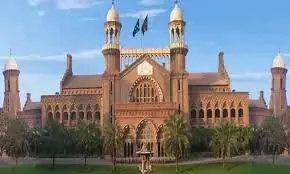Fruit in crisis: Florida’s orange groves buffeted by hurricane, disease
Vernon Hollingsworth grew up in Florida among his family’s orange trees, recently ravaged by a double whammy of disease and a hurricane that have sent juice prices spiraling and left farmers blinking in disbelief.
On a recent March morning, the fifth-generation farmer drove a pickup truck through the rows in his grove, pointing out the damage from Hurricane Ian last fall such as uprooted trees.
“I lost 95 to 97 percent of my crop,” the 62-year-old told AFP, adding “we’re going to have to rebuild, and we need help to do that.”
But the hurricane is only the latest blow.
In Florida, the world’s second largest producer of orange juice after Brazil, groves have been suffering from a citrus tree disease called Huanglongbing (HLB) for the last 17 years.
A bacteria spread by an insect, the Asian psyllid, causes the disease, which makes trees produce a green, bitter fruit that is unsuitable to sell, before dying within a few years.
The double crises of Ian and HLB have wreaked havoc on the industry, which is so integral to Florida’s identity that the orange is even on the state license plate.

Orange production in Florida is down 60.7 percent from last season, one of the lowest figures since the 1930s, according to US Department of Agriculture estimates.
The hurricane alone caused the state’s citrus sector losses of $247.1 million, among $1.03 billion to the overall agricultural economy, according to estimates from the University of Florida.
‘Very bad need’
The situation is particularly painful for Hollingsworth, because the season was looking promising before Ian struck his 4,200 acres (1,700 hectares).
For the first time, he had begun injecting his orange trees with two bactericide treatments recently approved by US authorities for fighting HLB, which is also known as citrus greening disease.
“With the new medications I saw (the orange trees) could blossom and get bigger as it once was… This hurricane could not happen at a worse time for Florida’s citrus,” Hollingsworth said.

Now his groves, which employ about 50 full-time staff plus seasonal workers, are facing a dire stretch of months.
Profits from one harvest are what make it possible to produce the next, but this year Hollingsworth has almost no income: Insurance hasn’t paid enough to cover the damage and each replanted tree will take four years to bear fruit, he explained.
“It’s really difficult. I’m trying to do my best. But if we could get some help, it would be remarkable,” he said, in reference to the state of Florida or federal government.
“We are really in a very bad need right now.”
Marisa Zansler of the Florida Department of Citrus, which regulates the industry, said state officials are striving to help growers plant trees.
The push is key to shoring up the citrus industry, which accounts for $6.9 billion of Florida’s economy and more than 32,500 jobs, said Zansler, the agency’s director of economic and market outreach.

Meanwhile the price of orange juice has skyrocketed in US supermarkets and Brazil is taking advantage of the situation. The South American giant has exported 240,000 tons to the United States this season, 82 percent more than the previous season, according to official data.
In Arcadia, Hollingsworth says he is not losing hope. He is convinced that if he overcomes this slump, the future will be bright, especially given the new treatments against HLB.
It is, he says, the only option.
“I’m going to stick with this,” he told AFP. “I don’t know how to do anything else.”
For the latest news, follow us on Twitter @Aaj_Urdu. We are also on Facebook, Instagram and YouTube.





















Comments are closed on this story.